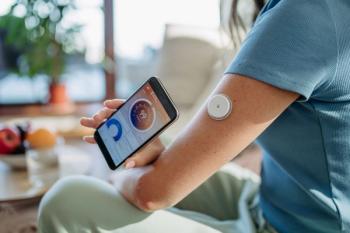
Contemporary OB/GYN week in review: birth complications, fasting, and more
Review some of the top stories from the Contemporary OB/GYN website over the past week and catch up on anything you may have missed.
This week at Contemporary OB/GYN®, we covered topics ranging from birth complications in rural patients to misconceptions about pregnancy safety in older women. Click the links below to read anything you might have missed from Monday, October 13, to Friday, October 17, 2025.
Bibiana Avella Molano, MD, links rural residence to birth complication risk
Rural residence continues to be a significant factor influencing maternal and neonatal health outcomes, according to new research presented by Bibiana Avella Molano, MD, anesthesiology resident at the Medical College of Georgia. In this discussion with Contemporary OB/GYN, Avella Molano explains that infants born to mothers living in rural areas are more likely to have non-reassuring Apgar scores, a key indicator of newborn health immediately after delivery.
The study also found that rural residents are at higher risk of inadequate prenatal care, underscoring systemic disparities in access to maternal health services. Using multivariate logistic regression, the analysis identified rural residence, alongside factors such as race, insurance type, and comorbidities, as significant predictors of adverse birth outcomes.
Experts say most children fast too long before surgery
A new study presented at the American Society of Anesthesiologists (ASA) 2025 Annual Meeting highlights significant concerns about excessive preoperative fasting times among children undergoing surgery.
Researchers Ethan Lowder, BA, MD student Harvard Medical School, and Alexander Nagrebetsky, MD, MSc, assistant professor at Harvard Medical School, analyzed data from over 71,000 pediatric patients to evaluate fasting durations for clear liquids before surgery. The ASA recommends that children abstain from clear liquids for no more than 2 hours prior to anesthesia. However, the study found that actual fasting periods are far longer than advised.
Across the dataset, the median fasting duration was 10.3 hours, with infants and neonates fasting for a median of 6.4 hours. Additionally, 79% of children were fasted for more than 4 hours—twice the recommended period—and many exceeded 10 hours without clear liquids.
The Menopause Society prepares to convene in Orlando for 2025 Annual Meeting
The Menopause Society will host its 2025 Annual Meeting from October 21–25 at the Hyatt Regency Orlando, welcoming clinicians, researchers, and women’s health experts from around the world. This year’s theme, “Optimizing Health and Longevity at Menopause and Beyond,” reflects a program designed to address the evolving needs of midlife and older women.
Led by Scientific Program Committee Chair Cheryl Cox Kinney, MD, FACOG, MSCP, the meeting will offer a diverse lineup of evidence-based sessions, abstract presentations, and hands-on educational opportunities across a range of topics in menopause and healthy aging.
Survey reveals misconceptions about pregnancy safety for older women
Orlando Health researchers have identified widespread public misconceptions about obstetrics care based on results of a recent survey.
These misconceptions include 54% of US individuals believing women cannot safely give birth in their 40s, and only 41% being aware of the comprehensive technology and testing available to reduce risks after the age of 35 years. These precautions have been implemented to ensure both maternal and infant safety.
"Pregnant women over the age of 35 are no different than other younger patients," said Natasha Spencer, MD, obstetrician and gynecologist at Orlando Health. "In my clinic, one-third of my maternity patients are of advanced maternal age and they have routine, uncomplicated pregnancies."
POTS common among women with long COVID
Researchers from the Karolinska Institutet have identified increased odds of postural orthostatic tachycardia syndrome (POTS) in patients with long COVID, publishing their findings in Circulation: Arrhythmia and Electrophysiology on September 30, 2025.
POTS was reported in approximately 1 in 3 patients with severe long COVID, vs under 1% of the general Swedish population prior to the COVID-19 pandemic. This highlighted a need to screen for POTS in patients with long COVID experiencing significant increases in heart rate while changing position from lying down to standing or during exertion.
“Previous, smaller studies have shown that there is a connection, but now we can say with certainty that POTS is a very common condition in patients with long COVID. This is valuable knowledge for both health care professionals and patients,” said Mikael Björnson, PhD student at the Karolinska Institutet.
Newsletter
Get the latest clinical updates, case studies, and expert commentary in obstetric and gynecologic care. Sign up now to stay informed.











